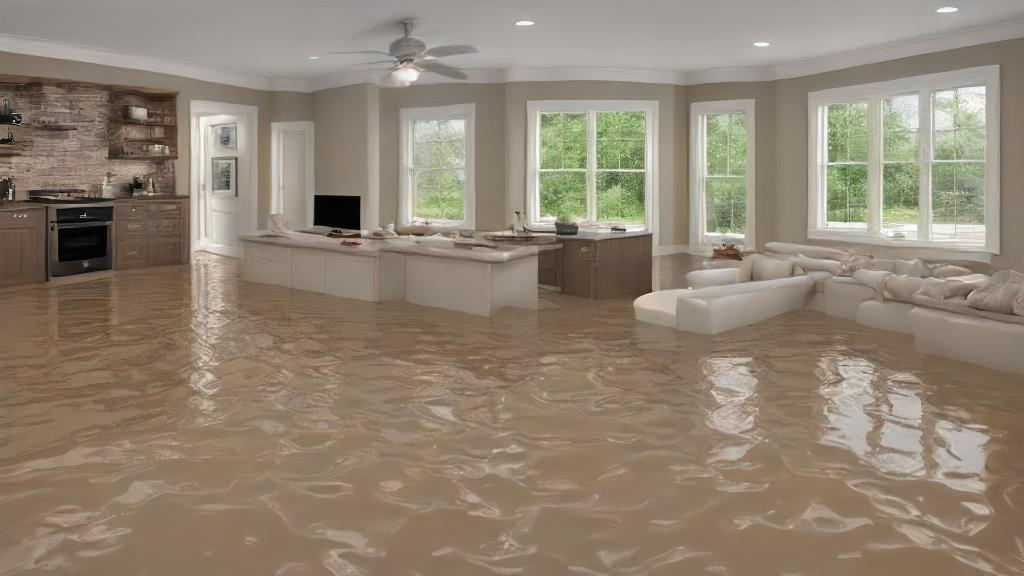Introduction
In the wake of water damage, whether from a burst pipe, a flood, or a leaky roof, the restoration process is vital to return the property to its pre-loss condition. It’s not merely about drying up the water; it involves a series of steps aimed at sanitizing, salvaging, and restoring the affected areas. Let’s delve into the intricacies of water damage restoration, categorized by the severity and type of water intrusion.
Understanding Water Damage Categories
The Institute of Inspection, Cleaning and Restoration Certification (IICRC) classifies water damage into three categories based on the source and level of contamination:
Category 1: Clean Water Damage
Clean water originates from a sanitary source and poses no substantial risk to human health upon exposure. This category typically includes water from broken supply lines, sink overflows, or rainwater.
Category 2: Gray Water Damage
Gray water contains significant contamination and may cause discomfort or illness if ingested or exposed to. Sources of gray water include dishwasher or washing machine overflow, as well as toilet overflow with urine (no feces).
Category 3: Black Water Damage
Black water is highly contaminated and poses serious health risks due to its contents, which may include sewage, toxins, or pathogens. This category encompasses water from sewage backups, seawater intrusion, or river flooding.
Also Read: Water Damage Houston: Protecting Your Property Against Disaster
The Restoration Process: Mitigation, Remediation, and Restoration
The restoration journey typically comprises three sequential stages: mitigation, remediation, and restoration. While some companies integrate remediation within mitigation, each phase serves a distinct purpose.
Mitigation: Containing the Damage
Mitigation aims to prevent further damage by swiftly addressing the water intrusion. It involves:
- Assessment: Evaluating the extent and severity of water damage, including structural integrity.
- Extraction: Removing water using pumps, fans, and dehumidifiers to dry the affected areas.
- Disposal: Safely disposing of damaged materials, particularly those contaminated with black water.
- Protection: Boarding up windows, using tarps, and sealing off areas to prevent further damage.
Remediation: Cleanup and Sanitization
Remediation focuses on cleaning, disinfecting, and restoring salvageable materials. Key steps include:
- Cleaning: Thoroughly cleaning and disinfecting affected surfaces, furniture, and belongings.
- Deodorizing: Eliminating odors caused by water damage to ensure a fresh environment.
- Sanitizing: Applying antimicrobial treatments to prevent mold and bacterial growth.
- Material Removal: Discarding irreparable items and damaged structural components.
Restoration: Returning to Pre-Loss Condition
Once mitigation and remediation are complete, restoration begins. This phase involves:
- Structural Repair: Repairing or replacing damaged flooring, walls, ceilings, windows, and doors.
- Content Restoration: Cleaning and restoring salvageable personal belongings, furniture, and fixtures.
- Mold Prevention: Conducting thorough moisture testing and implementing measures to prevent mold growth.
- Final Inspection: Ensuring the property is completely dry and restored to its pre-loss state.
Cost Considerations and Tips for Water Damage Repair
The cost of water damage restoration varies depending on factors such as the extent of damage, type of water intrusion, and size of the property. Mitigation costs range from $1,300 to $5,200, with black water damage mitigation being more expensive.
It’s crucial to address water damage promptly and effectively to prevent escalation and additional costs. Here are some tips for efficient water damage repair:
- Prompt Action: Act swiftly to mitigate water damage and prevent further deterioration.
- Proper Assessment: Determine the severity and category of water damage to implement appropriate restoration measures.
- Professional Assistance: Seek help from certified water damage restoration professionals for thorough cleanup and restoration.
- Insurance Coverage: Document the damage and work closely with your insurance provider to facilitate the claims process.
- Preventive Measures: Maintain optimal indoor humidity levels and address leaks promptly to prevent water damage recurrence.
- Cost-Effective Solutions: Consider restoration options for salvageable items and materials to minimize replacement costs.

Also Read: Dealing with Water Damage Houston: Expert Restoration Services
Conclusion
Restoration of water damage is a multifaceted process that requires meticulous planning, swift action, and professional expertise. By understanding the categories of water damage and following a structured restoration approach, property owners can mitigate damage, restore their properties, and regain peace of mind.
Whether facing clean water damage or dealing with the aftermath of a sewage backup, timely restoration efforts can make all the difference in preserving property value and ensuring occupant safety. Remember, when it comes to water damage restoration, proactive measures and thorough restoration are key to a successful outcome.










